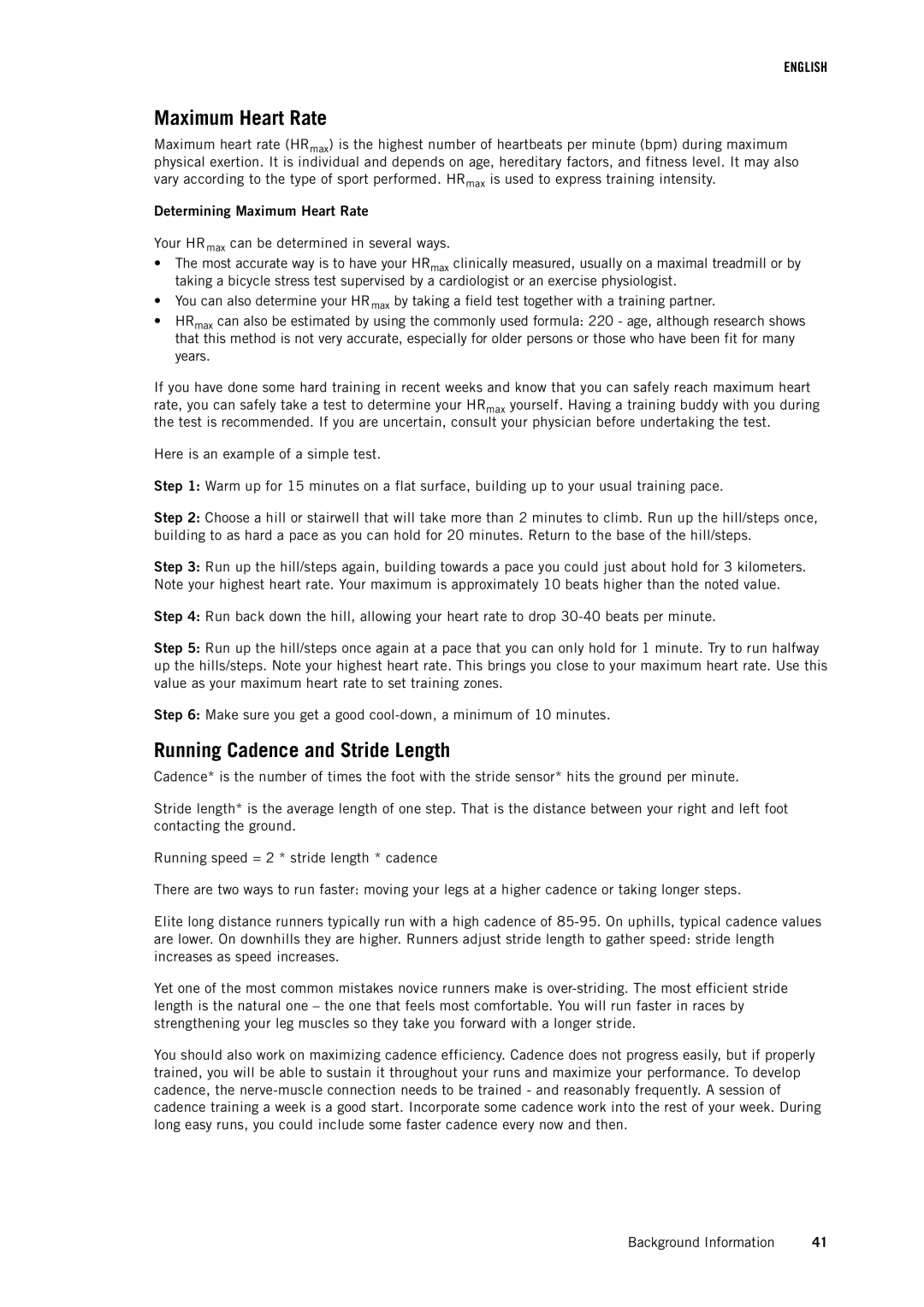ENGLISH
Maximum Heart Rate
Maximum heart rate (HRmax) is the highest number of heartbeats per minute (bpm) during maximum physical exertion. It is individual and depends on age, hereditary factors, and fitness level. It may also vary according to the type of sport performed. HRmax is used to express training intensity.
Determining Maximum Heart Rate
Your HRmax can be determined in several ways.
•The most accurate way is to have your HRmax clinically measured, usually on a maximal treadmill or by taking a bicycle stress test supervised by a cardiologist or an exercise physiologist.
•You can also determine your HRmax by taking a field test together with a training partner.
•HRmax can also be estimated by using the commonly used formula: 220 - age, although research shows that this method is not very accurate, especially for older persons or those who have been fit for many years.
If you have done some hard training in recent weeks and know that you can safely reach maximum heart rate, you can safely take a test to determine your HRmax yourself. Having a training buddy with you during the test is recommended. If you are uncertain, consult your physician before undertaking the test.
Here is an example of a simple test.
Step 1: Warm up for 15 minutes on a flat surface, building up to your usual training pace.
Step 2: Choose a hill or stairwell that will take more than 2 minutes to climb. Run up the hill/steps once, building to as hard a pace as you can hold for 20 minutes. Return to the base of the hill/steps.
Step 3: Run up the hill/steps again, building towards a pace you could just about hold for 3 kilometers. Note your highest heart rate. Your maximum is approximately 10 beats higher than the noted value.
Step 4: Run back down the hill, allowing your heart rate to drop
Step 5: Run up the hill/steps once again at a pace that you can only hold for 1 minute. Try to run halfway up the hills/steps. Note your highest heart rate. This brings you close to your maximum heart rate. Use this value as your maximum heart rate to set training zones.
Step 6: Make sure you get a good
Running Cadence and Stride Length
Cadence* is the number of times the foot with the stride sensor* hits the ground per minute.
Stride length* is the average length of one step. That is the distance between your right and left foot contacting the ground.
Running speed = 2 * stride length * cadence
There are two ways to run faster: moving your legs at a higher cadence or taking longer steps.
Elite long distance runners typically run with a high cadence of
Yet one of the most common mistakes novice runners make is
You should also work on maximizing cadence efficiency. Cadence does not progress easily, but if properly trained, you will be able to sustain it throughout your runs and maximize your performance. To develop cadence, the
Background Information | 41 |
